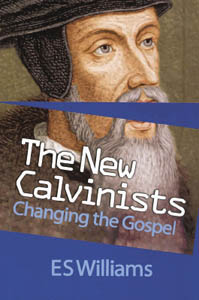
Paperback, 69 pages, Published by The Wakeman Trust and Belmont House Publishing, 38 Walcot Square, London, SE11 4TZ, England. ISBN 978-1-908919-32-8.
For those who do not follow events in evangelical circles, this book will seem to have little relevance. Whether it is ‘old Calvinism’, or so-called ‘new Calvinism’, many may feel that the turmoil affecting those of a Reformed persuasion is of no interest to readers of this magazine. However, the warning sounded by the author should not be so easily and readily dismissed. The advent of world-wide communication, and social networking, exposes every assembly to the influences abroad in so-called evangelicalism.
It should be said that the book is clearly written from a Reformed viewpoint and, as such, majors upon those who are pastors in various churches, mainly in America. Nevertheless, names such as John Piper, Don Carson, and John MacArthur will not be completely unknown in the UK, if only through their writings. The book seeks to sound an alarm, warning that some are embracing, and others associating with, a heterodoxy that could be devastating in its impact. As Williams puts it, ‘The old, well-defined standards of separation from the world are obscured in the mist of pseudo-intellectual jargon, so that believers can be led into compromising flirtation with worldly methods’. The book contains three chapters dedicated to the leaders of New Calvinism, Tim Keller, John Piper, and Mark Driscoll, before two chapters on the groups in the UK that have embraced the philosophy. It would not be an understatement to say that the chapter on Keller is alarming, and that on Driscoll shocking. As Williams states, ‘Keller’s supreme “salvation” is about saving the world from injustice and oppression, while the Gospel of salvation from sin is a means to that end’. On Driscoll, the author quotes extensively from his books and sermons, the content of which is, at times, blasphemous. Whilst those familiar with the opposing forces in first-century Christianity may not find anything particularly new, it is of deep concern that there should be well-known evangelicals who are prepared to be identified with such teaching and practice in the USA and the UK.
This book is not pleasant reading, but the pages of endnotes indicate that the author has researched his book well. If the aim of this movement is to attract young people, drawing them in by its commitment to contemporary worship, elders need to be on their guard!
| Cookie | Duration | Description |
|---|---|---|
| cookielawinfo-checkbox-advertisement | 1 year | Set by the GDPR Cookie Consent plugin, this cookie is used to record the user consent for the cookies in the "Advertisement" category . |
| cookielawinfo-checkbox-analytics | 11 months | This cookie is set by GDPR Cookie Consent plugin. The cookie is used to store the user consent for the cookies in the category "Analytics". |
| cookielawinfo-checkbox-functional | 11 months | The cookie is set by GDPR cookie consent to record the user consent for the cookies in the category "Functional". |
| cookielawinfo-checkbox-necessary | 11 months | This cookie is set by GDPR Cookie Consent plugin. The cookies is used to store the user consent for the cookies in the category "Necessary". |
| cookielawinfo-checkbox-others | 11 months | This cookie is set by GDPR Cookie Consent plugin. The cookie is used to store the user consent for the cookies in the category "Other. |
| cookielawinfo-checkbox-performance | 11 months | This cookie is set by GDPR Cookie Consent plugin. The cookie is used to store the user consent for the cookies in the category "Performance". |
| elementor | never | This cookie is used by the website's WordPress theme. It allows the website owner to implement or change the website's content in real-time. |
| viewed_cookie_policy | 11 months | The cookie is set by the GDPR Cookie Consent plugin and is used to store whether or not user has consented to the use of cookies. It does not store any personal data. |